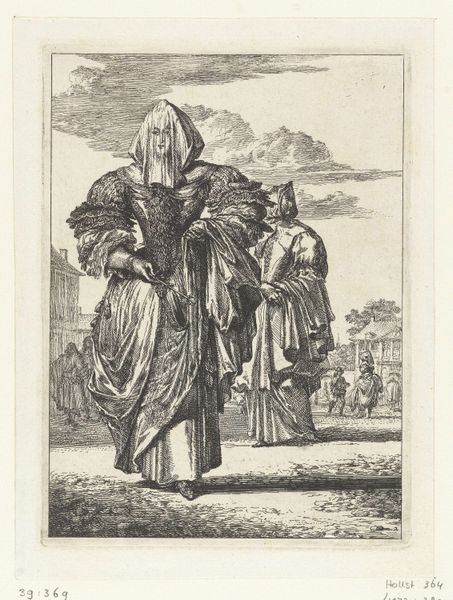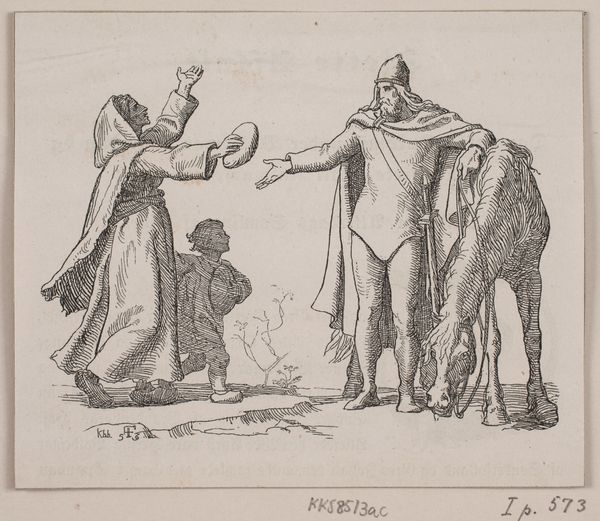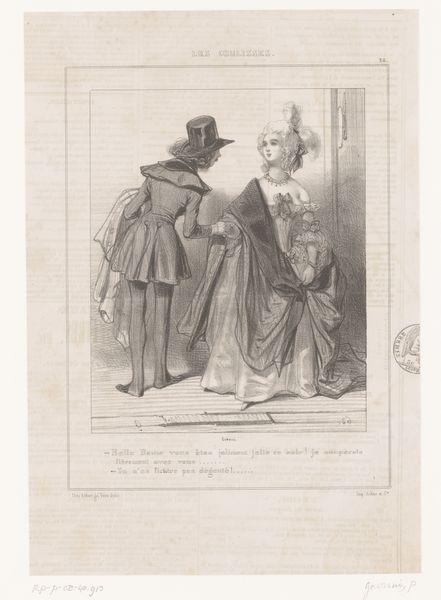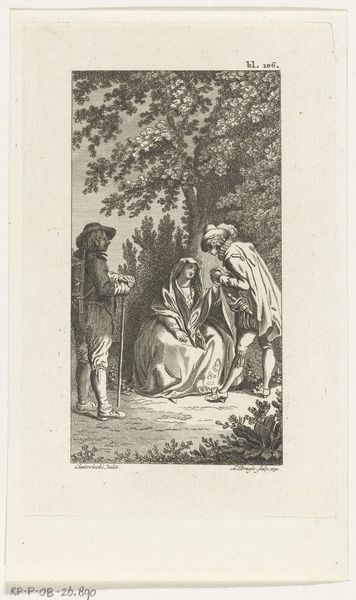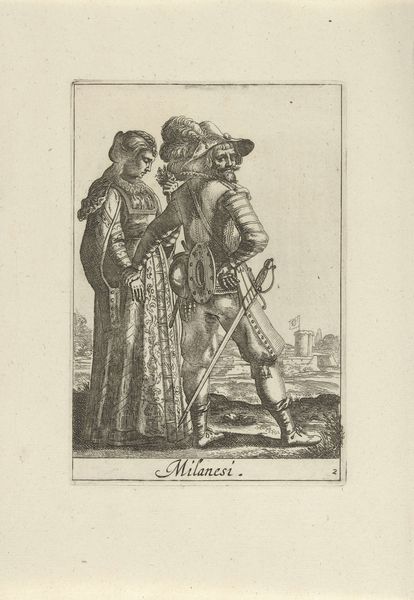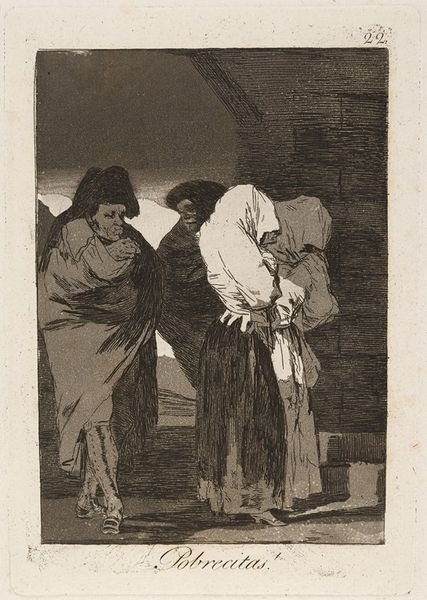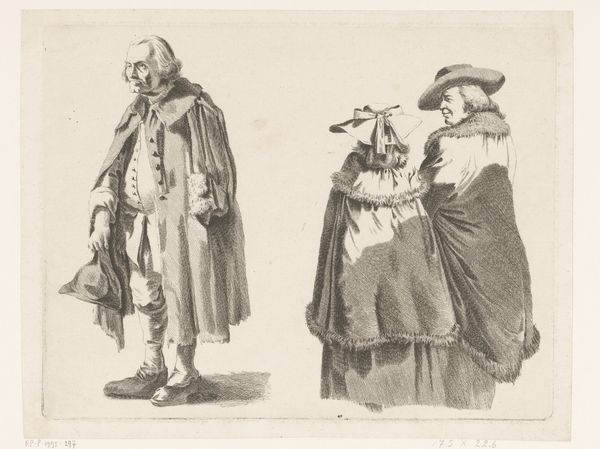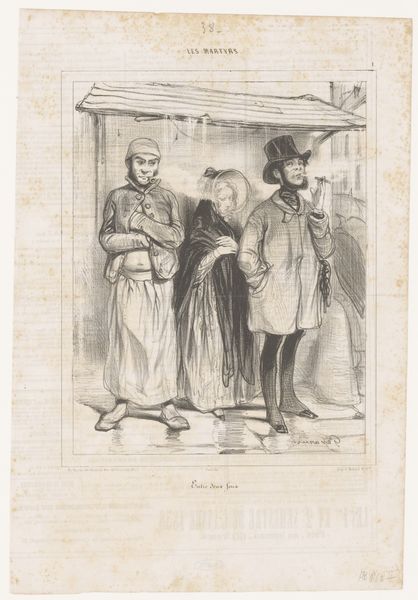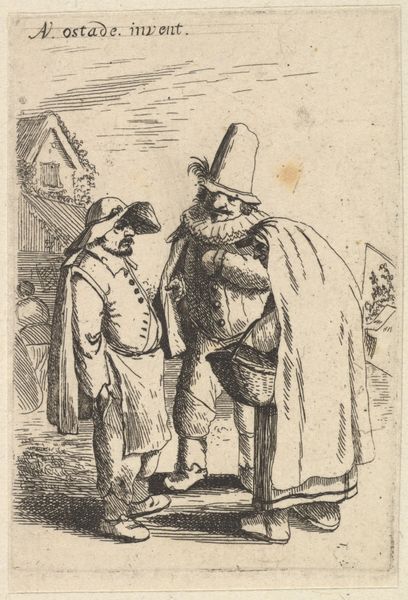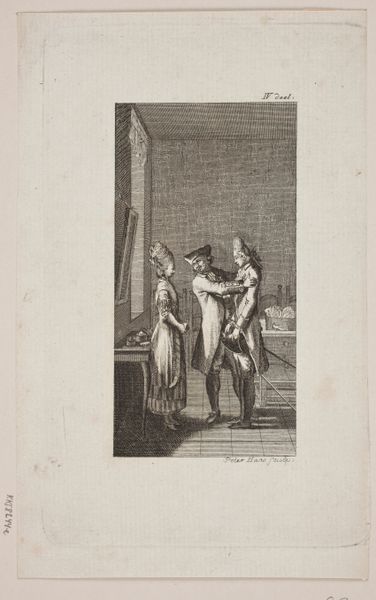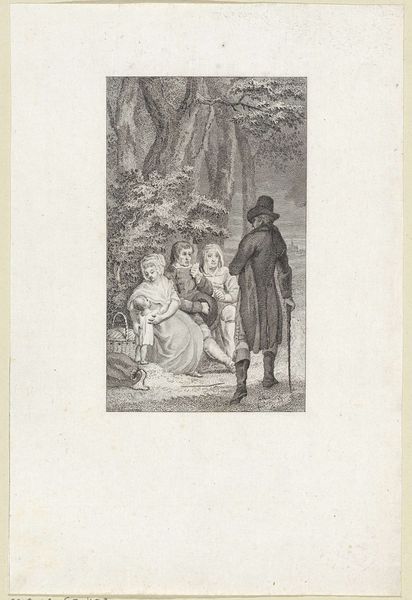
print, engraving
#
portrait
# print
#
genre-painting
#
history-painting
#
italian-renaissance
#
engraving
Dimensions: height 167 mm, width 114 mm
Copyright: Rijks Museum: Open Domain
Curator: What strikes me first about this print, entitled "Paar gekleed volgens de Napolitaanse mode," or "Couple Dressed in the Neapolitan Fashion," is the somewhat burdened air about them. Anonymous created this engraving sometime between 1720 and 1772, a curious window of time. What are your immediate impressions? Editor: Well, it looks like a fancy dress party gone wrong! He seems a bit resigned, almost as if he’s dragging her to a social engagement he’d rather avoid. Is it just me, or does his outfit scream “I was told to dress ‘festive,’ but I'm secretly miserable?" Curator: Ha! There's a distinct possibility you're right on the mark. However, beyond our subjective interpretations, remember these prints circulated as visual documentation, especially aimed at people who wanted to know what kinds of clothing to use or expect to see across Europe. The woman, adorned with her ornate robe, may signify elevated status in a society keen on broadcasting it visually. What would that cape do to express class through visual coding? Editor: Absolutely! It’s almost comical, the lengths one would go to. And that fan! Is it there for actual cooling, or just performative wealth display? Perhaps this is the dawn of "aspirational dressing." You know, where people don the garments they think will get them to climb up the social ladder, however ludicrous! It is as if people use dress and ornament for self-induced trance of transformation into their desired persona. Curator: It seems the essence of Neapolitan fashion—or at least the anonymous artist's depiction—was designed precisely to broadcast such social status. Clothing can embody cultural memory. I suppose we now use dress in much the same way, really, don’t we? But beyond its fashion plate function, perhaps it reflects anxieties around shifting social boundaries. I agree on aspirational display in many shapes here! Editor: Indeed, the layers are abundant here. And looking beyond the clothing, the print sparks all kinds of questions: what were the actual lives of such people? How staged, curated, and awkward were these posed encounters in the “best clothes?” It feels simultaneously distant and strangely… relatable. Curator: A fruitful perspective, as always. It's easy to see how these visual documents transcended their primary functions, serving as both ethnographic records and inadvertent social commentary. Editor: Well, thank you! And as always, delving into art and cultural history is as fun as peering into a brilliantly bizarre time capsule. Or, shall we say, a very fashionable one?
Comments
No comments
Be the first to comment and join the conversation on the ultimate creative platform.
